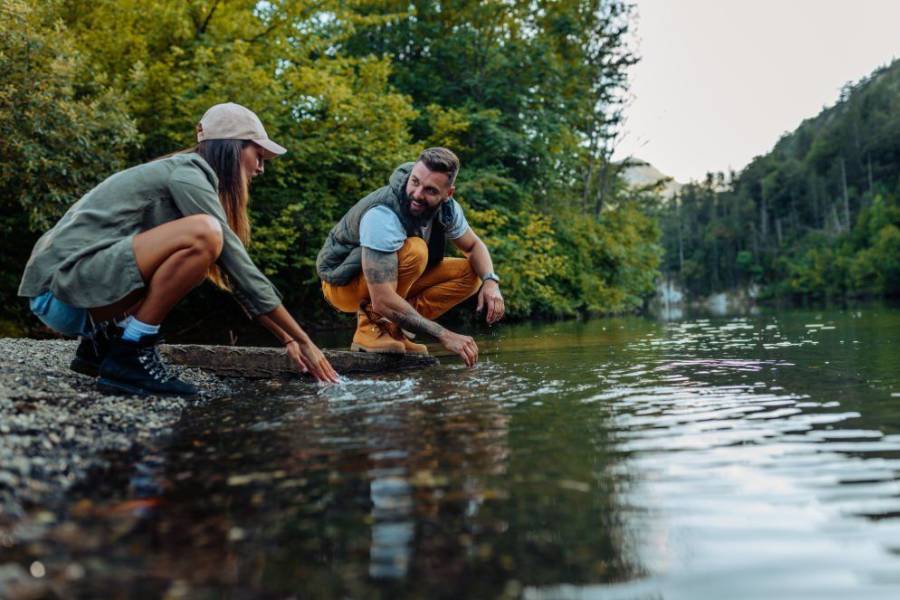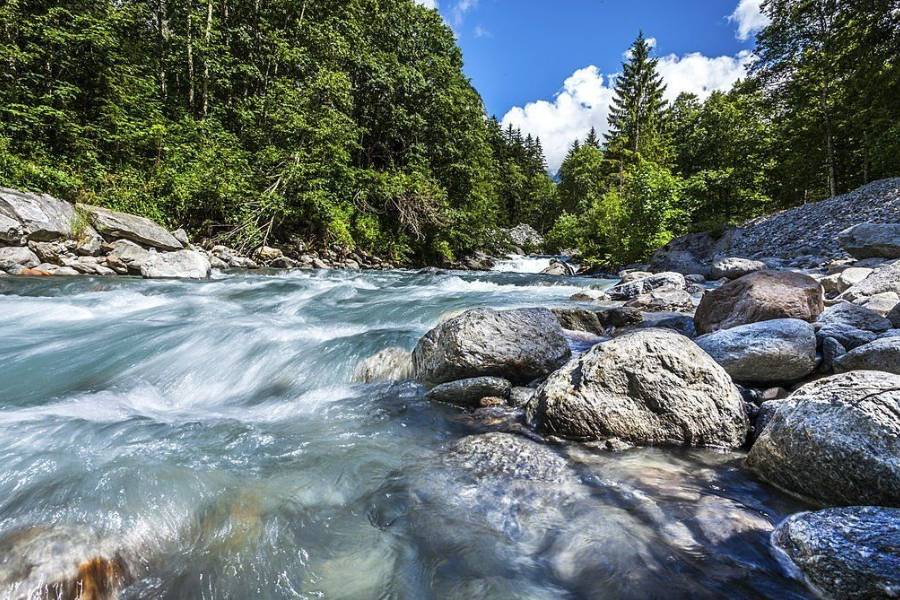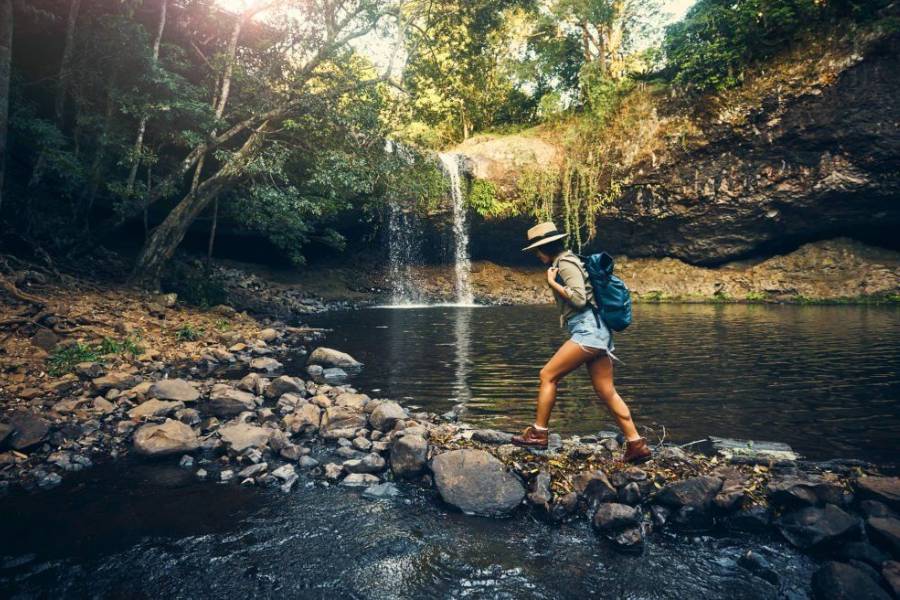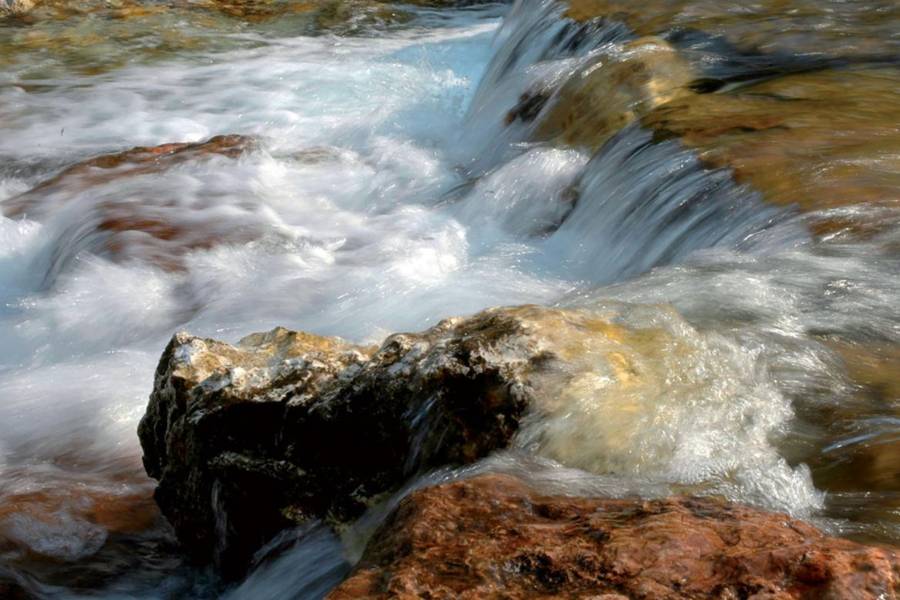Managing Water When Hiking: Complete Guide

Effectively managing water while hiking can be a real challenge. Should you drink from a fountain? Trust a stream or a mountain lake? In reality, while nothing truly replaces a reliable water supply, there are solutions to purify water during hiking, ensuring both safety and adequate hydration for sustained energy.
We’ll guide you through the process so you don’t feel overwhelmed in your quest for clean and safe drinking water in the great outdoors.
Mastering Water Management on Your Hiking Adventure
Let’s see how you can manage water when hiking in our comprehensive guide
Before You Start Hiking
First of all, we need an average of 2-3 liters of water per day for an adult. This quantity increases if you embark on more sustained routes, and obviously, in hot weather. When the water supply has been depleted for a while, the consequences can result in hyperthermia. In conclusion, stay hydrated!
Hydration obviously varies according to temperature, terrain, and our basic hydration rate, specific to each individual. Indeed, some hikers need to drink more. In the event of a more intense hike in summer, your hydration level therefore drops more quickly.
Hence the interest in drinking…
Above all, you must not limit yourself. Dehydration is very harmful to our body if we are in full sun. We repeat, do not wait to be thirsty to drink. Hydrate as you go, in small regular sips. If you are hiking as a family, be careful of children who dehydrate more quickly.

Finally, think not only about the water you should drink but also about the water you consume for cooking or your hygiene. Because even when hiking, it is important. Avoid energy drinks or even sodas… which will further dehydrate you. What’s more, this kind of extreme sugar intake is very bad for your health.
Haters will say it’s obvious, but why do we need to have clean water? Unless you take water directly from a local or a safe tap, water in the mountains can always contain impurities. It must be purified of everything that can be found there. Chemical contaminants such as chlorine, nitrates, pesticides, etc., most often result from human activity, especially when we hike with clothes water-repellent.
You will also find bacteria like Salmonella, Coliform, and E Coli … And micro-organisms like Giardia. All of these bacteria can find their way into standing water, and can quickly cause headaches, diarrhea, cramps, dizziness, and a whole lot more. The interest of having purified water stocks is certainly to hydrate you and avoid a host of diseases.
Day hike
There are abundant sources of drinking water: in the case of a hike, you will pass through many supply points such as villages, refuges, and fountains… You can therefore limit the quantity of water to carry in the bag. A 1.5 L bottle may suffice.
Do not hesitate to knock on the local campsite. They often do it with a good heart. If there is no spring on your route, remember to bring either enough water for your day or something to purify it.
Great hike
During a roaming hike, several cases arise in terms of supplies and the quantity to carry.
First, if you have abundant sources of drinking water, in the case of a hike where you pass through many supply points such as villages, refuges, and fountains, you can limit the quantity of water to carry in the bag. A 2L water bottle or bladder may suffice. This may save your knees a bit.
If you don’t have abundant drinking water sources in the case of a long trek in an arid zone, you may not pass many villages. However, there is a good chance of crossing rivers, lakes, or even springs. It’s important to note that the appearance of water alone does not guarantee its drinkability.
It is therefore necessary to have a stock of clean water, which you can consume quickly. In this case, you will need to take a filtration system with you. We explain a little below.

Some areas even in The United States are poor in water sources and some of our hikes do not include water supplies on the way. It is then necessary to plan its water management well and to carry more than usual. Once again, good preparation will prevent you from running out of water too quickly.
Water Containers and Replenishment
Containers
As far as the container is concerned, today there is a multitude of solutions, and we have selected a few.
- Metal Gourd: The good old metal gourd, very solid but heavy. Some give a taste to the water but this is less and less true for recent gourds. In a very cold environment, metal is a good conductor of heat. Water will freeze faster and you risk sticking your fingers on it.
- Plastic Water Bottle: It is a good alternative. There are even water bottles that filter the water directly. It’s not bad but it is to be taken in addition because there are not enough large containers at the moment, unless you multiply them.
- Water Bag: These plastic food bags are practical because they are light and easily foldable once empty. They slip into the bag during the day and allow you to drink, thanks to a tube that you always have within reach. hand. It is very effective for continuous hydration. However, there are 2 major flaws in this solution: firstly, we do not follow what we have left in stock, and above all, these bags have a tendency to give a taste to the water. So choose good brands to avoid this last point. Besides this, prefer a pocket with a large opening for filling.
Plastic water bottles, despite their durability, lightweight nature, and convenience, present the least environmentally friendly solution. They contribute to both physical and visual pollution in our surroundings. While these bottles are sturdy, impart no taste to the water, and are easily collapsible and cost-effective, the environmental impact, as evidenced by littered areas like Everest, raises concerns about their long-term sustainability.
How to restock on the summits?

Filling a water bottle from a source may seem simple, but it’s a crucial practice that can’t be emphasized enough. Unless absolutely certain that there are no dead animals or other contaminants upstream, it’s prudent to refrain from drinking directly from the source. Our bodies are accustomed to clean water, and we must exercise caution in this regard as we are vulnerable to waterborne pathogens.
Choosing the right water source is key, and treating it when necessary is a responsible practice. Whenever possible, opt for known and safe drinking water sources. In mountainous regions, you might encounter refuges, villages, or small fountains. When traveling abroad, tap water may not always be potable for outsiders. In case of uncertainty, assume that water treatment or the purchase of bottled water is necessary—unless you possess immunity, which may be the case for frequent travelers.
Water Treatment
Despite everything, if you have no directly drinkable source available, there are several techniques.
First, you can boil it: it’s the simplest and oldest technique for sanitizing water, and it takes less than 5 minutes. But this age-old technique has several flaws too. First, it takes a bit of time, you need equipment (meals, stove, etc.) and it requires fuel. For example, you can choose this technique for cooking water only. Because we don’t necessarily think about it, immersing your food in dirty water can be very dangerous. So remember to clean them with purified water before immersing them in purified water, especially if you are abroad.
There are also chemical treatments, such as Micropur tablets. There are different types but overall they are tablets based on chlorine or silver which will kill bacteria and amoebas and help keep the water clean over time. The action on viruses is longer and more effective. It is an interesting solution because it is safe and effective, but only if the basic water is clear and the product can be left to act for 1 to 2 hours. Therefore, this solution is polluting because all this ends up ending up in our bodies and nature.
There are also filtered water bottles or filter straws for water treatment. They are effective against bacteria and amoebas but less against viruses that are too small to be filtered. Filters are generally based on activated carbon cartridges with a limited lifespan or fiberglass mesh. They are very practical for drinking clean water immediately.
The big advantage is that they can even be adapted to water pockets or the necks of certain bottles. It is generally more expensive than tablets but more water can be treated over time.
- Warning: viruses sometimes slip into the water filter and chemical disinfection may be necessary.
Finally, there is ultraviolet treatment. This water purification process uses the emission of UV to neutralize the organisms present in the water. The devices look like large pens that run on batteries and are dipped into a container of clear water. It then suffices to stir it for the time indicated by the manufacturer, often a few minutes, and the water is then consumable.
The positive point is that it does not have the unpleasant taste of chemical additions. The big drawback of this solution is its price and the use of batteries. But it is not a miracle product to be free of any impurities. The water must first be clear and have been filtered.
The Latest Tips
We’ve shared almost everything, but we reserve some information for our latest advice. There are substitutes available that provide a quick supply of carbohydrates and minerals. While we won’t mention specific brands, it’s crucial to be cautious, as the quality differences can be significant.
In extreme cases of thirst, never resort to drinking seawater, as it can lead to kidney issues. It’s a hard stop! In emergencies, small amounts of your urine can be consumed. Additionally, it’s advisable to carry two water containers—one for immediate use and another being cleaned. This allows you to rotate between clean water and water in the process of purification.
Lastly, consuming unmelted snow is not recommended, as it can cause mouth burns and diarrhea. If there’s no alternative, melt the snow in a bottle beneath your clothing, but avoid direct contact with your skin.
If you want to get more hiking advice, take a look at our expert advice…






